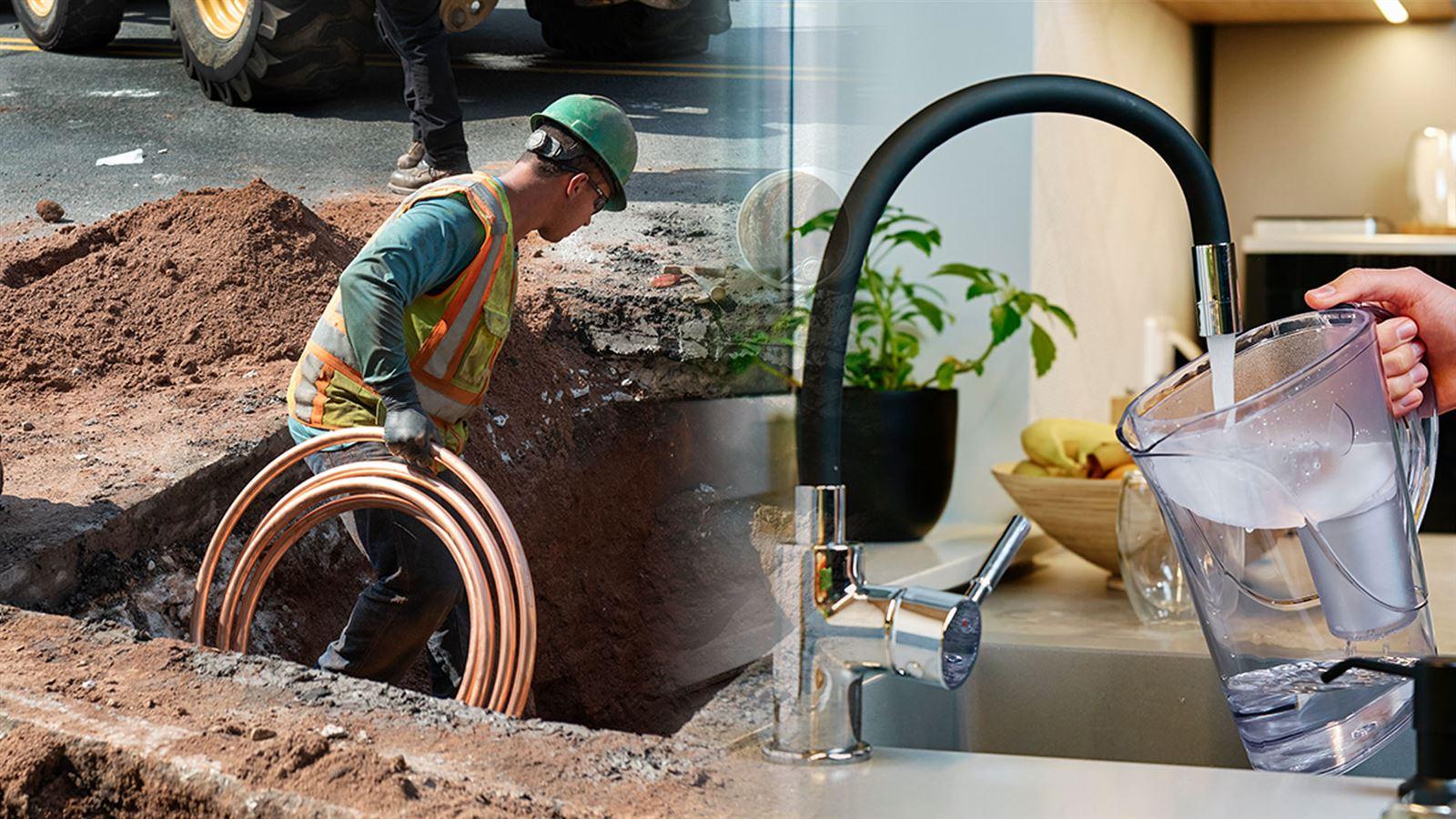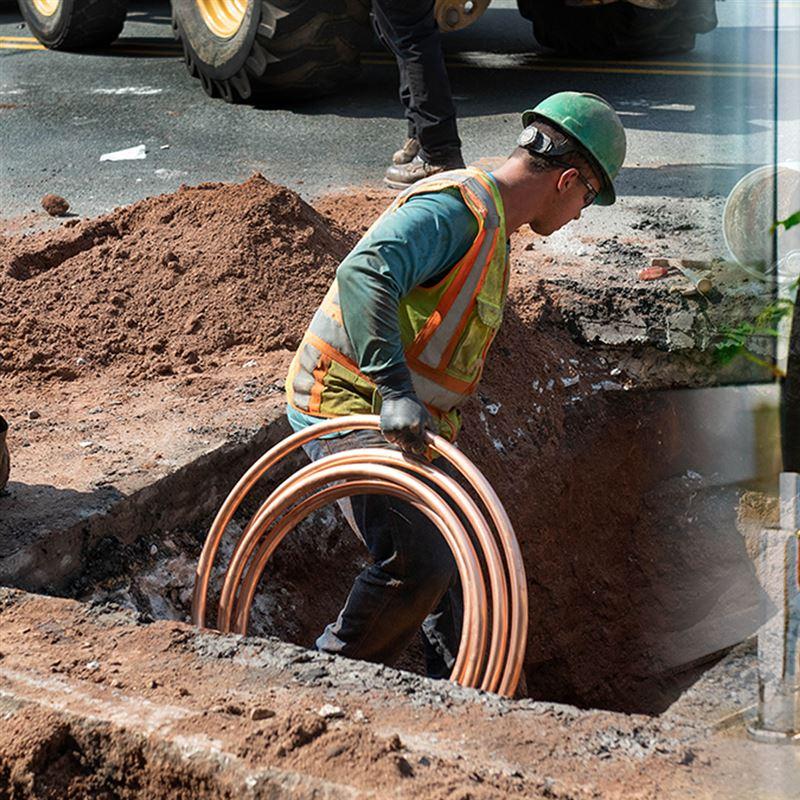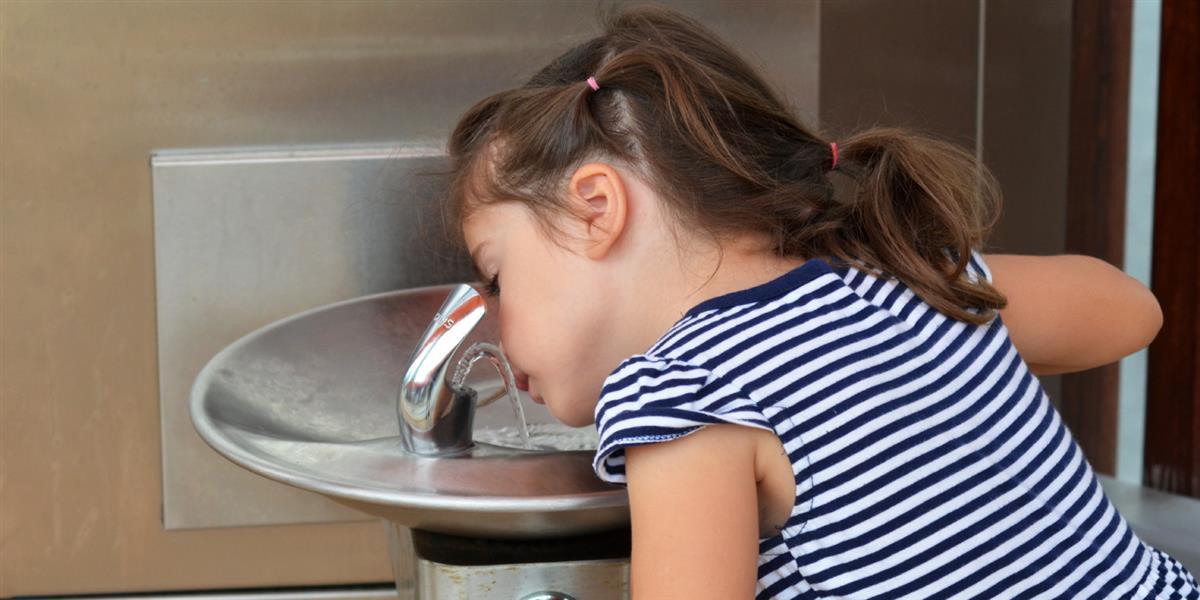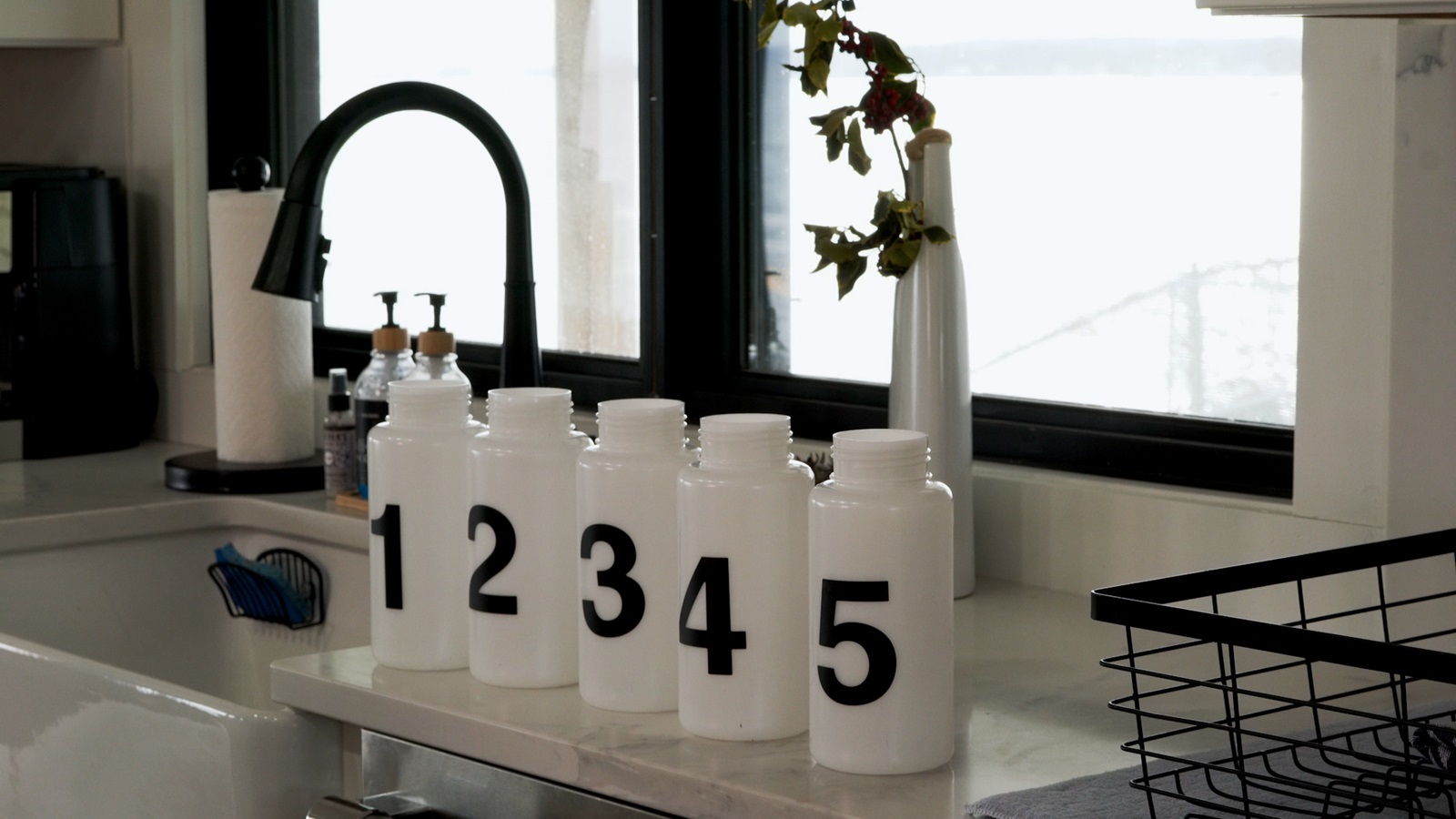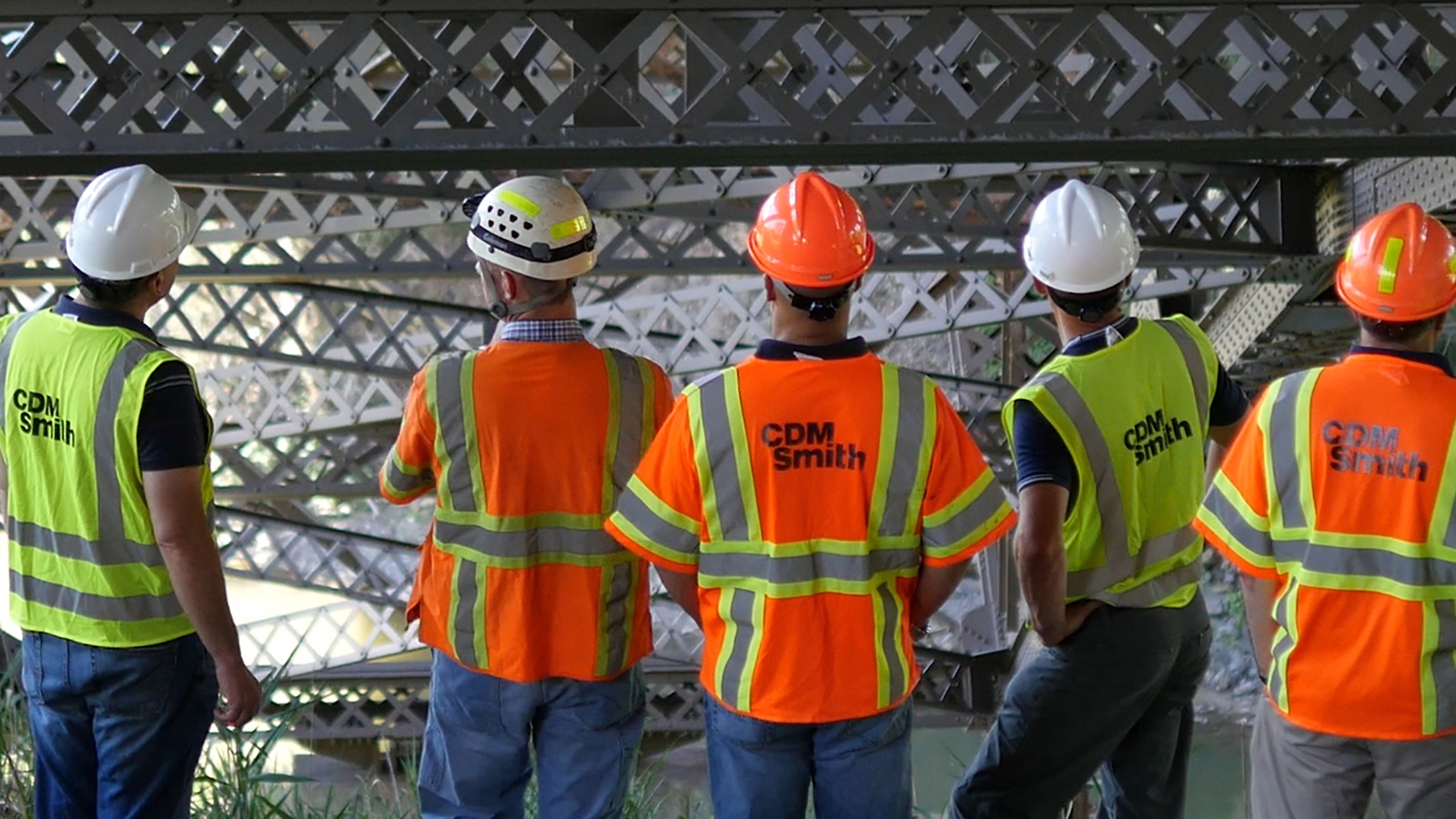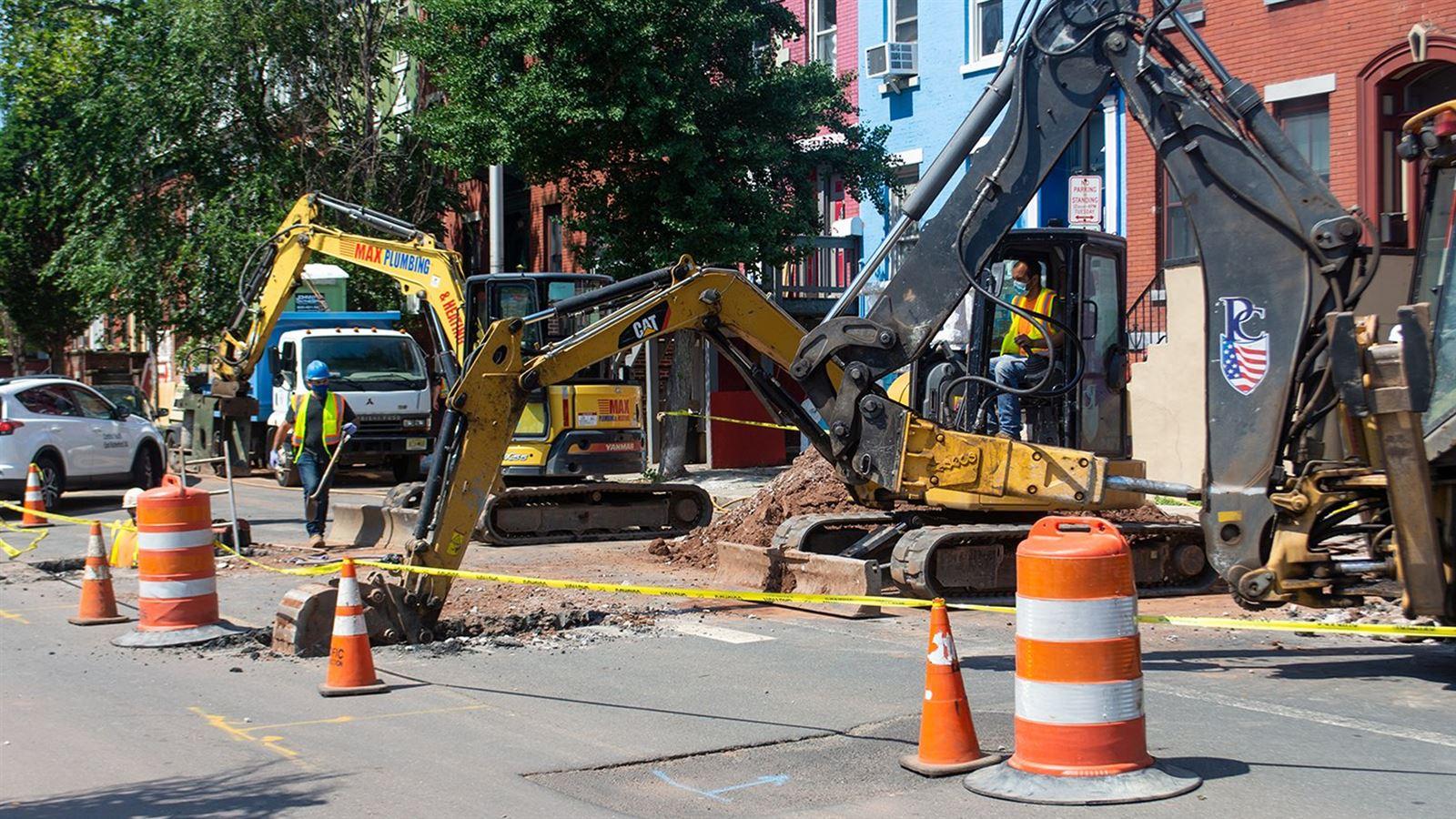The proposed Lead and Copper Rule Improvements have arrived. What does it mean for utilities?
The final rule is expected by October 2024 and our team will update this information with any further changes when it becomes available. The Lead and Copper Rule Improvements (LCRI) proposal focuses on the following elements. See the proposed rule here.
Inventory
Under the proposed LCRI, water systems still need to develop an initial inventory, make it publicly available, and submit it to the state by October 16, 2024. They would also be required to develop an updated service line inventory, called the LCRI baseline inventory, due by the LCRI compliance date (three years after the final LCRI is published, estimated October 2027). In this provision, water systems must review records on connector materials and include this information in the LCRI baseline inventory. This sets the replacement calculation for a utility, which is 10% of the sum of lead service lines (LSLs), galvanized requiring replacement (GRR) service lines, and unknown service lines.
In addition, the proposed rule would require systems to:
- Notify all properties with LSLs, GRRs, or unknowns within 30 days of submitting the inventory
- Update inventories annually and repeat the customer notifications to the remaining LSLs, GRRs or unknowns
- Use a validation process on non-lead service lines that do not have two points of physical verification to ensure the service line inventory is accurate
- Identify all service lines of unknown material by the replacement deadline (estimated 2037)
Service Line Replacements
The EPA is proposing mandatory full LSL replacements, which includes both the utility side and private side, regardless of the 90th percentile lead level.
The proposed LCRI would set a national minimum average annual service line replacement rate of at least 10%, with compliance assessed in accordance with a 3-year rolling average, which means there is a 10-year replacement deadline. With the EPA proposing to require LCRI baseline inventories by 2027, the replacement deadline is estimated to be 2037.
Some systems may be exempt from meeting the 10-year replacement deadline. If a system has over 100,000 lead and GRR service lines (not counting the unknowns), it would be required to replace 10,000 services per year, taking over 10 years to complete. These water systems would be eligible for a deferred deadline.
EPA is also proposing a threshold ratio of 0.039 annual replacements per household served (equal to 39 replacements per 1,000 households). If replacing all lead and GRR service lines in 10 years would cause a system to exceed this ratio, the system would also be eligible for a deferred deadline.
EPA is proposing to prohibit partial service line replacements unless conducted as part of an emergency repair or in coordination with planned infrastructure work, such as water main replacements. Even with water main replacements, a utility must offer to replace the customer side at least 45 days in advance of the work. If a system conducts a partial in an emergency, it must offer to replace the remaining private-side portion within 45 days.
If a customer replaces their lead or GRR service line and notifies the utility, the utility would need to replace their side if it is also lead within 45 days.
Disturbances
Water systems will be required to provide information and mitigation measures when conducting LSL and GRR replacements or activities that disturb a service line that may be lead. The required actions vary depending on whether it is a replacement or a disturbance and the level of disturbance that is being caused.
For a full or partial replacement water systems must provide educational and flushing information, pitcher filters or point-of-use (POU) devices, and six months of replacement cartridges to every residential unit served by the line. They must also offer a post-replacement sample (three to six months after replacement) following the full and partial replacement.
Systems must provide the same information and mitigation measures after a significant disturbance of a LSL, GRR or unknown, such as:
- Replacing a lead connector
- Replacing a non-lead portion of a service line connected to an LSL or GRR
- Replacing an inline water meter or water meter setter
Systems are not required to provide follow-up sampling after disturbances like the examples listed above.
Water systems must provide the basic educational material and flushing instructions to customers during water-related work that could disturb lead, GRR, unknown, including disturbances due to inventory activities.
Water Quality & Sampling
The LCRI proposes to reduce the lead Action Level (AL) from 15 to 10 parts per billion (ppb) starting after LCRI Compliance Date (reduced AL estimated to start in late 2027). EPA is proposing that systems collect both a first- and fifth-liter sample from sites served by LSLs, with the higher of the two sample results used in the 90th percentile calculation. Water systems must offer free testing for lead for properties with LSLs, GRRs or unknowns starting in 2028 (estimated).
There are other sampling and 90th percentile calculation changes going into effect for 2028 (estimated):
- Collect the minimum number of samples from only properties with lead service lines (Tier 1 and 2 sample sites) if there are sufficient locations in the system
- Include all sample results collected from Tier 1 and Tier 2 sites that are collected during the compliance period in the 90th percent calculation
- If a water system doesn’t have enough Tier 1 and 2 sample sites in their system to collect the minimum number of samples, it may only use the next highest Tier (i.e. Tier 3) to complete the sample pool
- Only the highest results from Tier 3 through 5 sample sites may be used to complete the minimum number of samples for calculating the 90th percentile
Previously called “Find-and-Fix," EPA is proposing to rename this provision to “Distribution System and Site Assessment.” Water systems will be required follow-up with sampling and assessment for all individual tap samples above 10 ppb starting after LCRI Compliance Date.
School Sampling
The LCRI proposes that systems can now gain a sample waiver form from both voluntary and mandatory sampling programs (including WIIN programs) for any sampling results conducted after January 1, 2021, if the methods meet the Lead and Copper Rule Revisions (LCRR)/LCRI requirements. But, systems must submit individual waivers on a school-by-school basis to use other sampling.
Mandatory sampling by the utility will start in 2028 (estimated) at 20% of elementary schools and childcares per year (for those facilities that are not covered by a waiver). Systems must provide all schools and childcares health risk information starting in 2028, annually.
Corrosion Control
Systems can defer installation or re-optimization of corrosion control treatment (CCT) if they commit to removing 100% of lead and GRR service lines at a minimum rate of 20% per year within five years of being triggered into CCT steps.
Water systems with multiple lead Action Level Exceedances (3 ALEs or more in a 5-year period), must conduct additional outreach and make filters available to customers. Utilities are not required to reoptimize CCT more than once following a lead ALE if meeting their Optimal Water Quality Parameters.
Public Outreach
The LCRI proposes that starting on the effective date (estimated October 2024), any lead AL exceedance (>15 ppb for the 90th percentile of the sampling pool) requires Tier 1 public notification within 24 hours. After the LCRI effective date, this notification will be when the 90th percentile is above 10 ppb.
For any lead and copper tap sampling after October 2027 (estimated), the results must be communicated to customers within three calendar days, regardless of the results. All results, including compliance samples, post-replacement samples or a customer-requested samples must be communicated in that time frame.
There are several additional public outreach requirements that the EPA is proposing to enhance public education. The goal is to improve the messaging of public communication, to ensure that it reaches the effected consumer and increase the frequency of outreach to be more proactive and educational.
*Date estimated based on LCRI effective date, estimated to be October 2024
